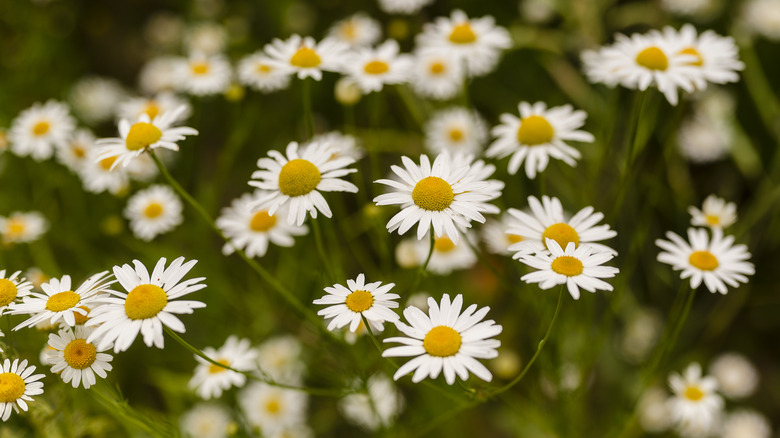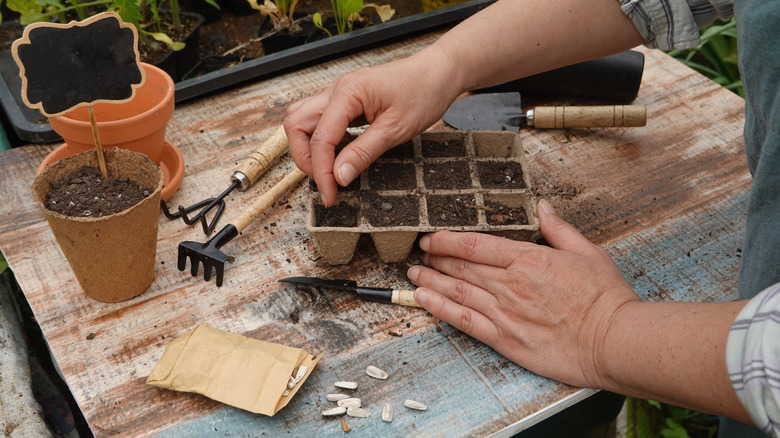How To Ensure Your German Chamomile Remains In Your Garden For Years
German chamomile (Matricaria chamomilla) is a beautiful herb in the Asteraceae (daisy) family that is used for potpourri, tea, and garnishes. This annual blooms with pretty white flowers that cover the plant throughout the summer. However, it can be sad to see the flowers turn at the end of the season. So, to ensure your German chamomile remains in your garden for years, it is helpful to collect the seeds and propagate new plants from them. The seeds will begin to ripen in the late summer and will often self-seed. However, collecting the seeds yourself and replanting will help with garden planning and maintenance. Sometimes, it is easy to pull up the seedlings of self-seeding annuals in the spring, thinking they are weeds!
To grow this herb from seed, you need to wait until the flowers have dried to harvest the seeds. They need to have reached full maturity before you collect them, so don't harvest them too early in the season. Look out for harder, darker seeds. When your German chamomile flowers are ready, cut them off and harvest them by shaking the seed head. You may need to gently rub the seed head to get all the seeds off the plant. Once that is done, place the seeds in paper envelopes with silica gel. The silica gel will keep them dry. Put the paper envelopes in sealed, glass jars and store them in a cool, dry place.
How to grow German chamomile from seed
Your German chamomile seeds will have hopefully dried out and stayed viable over the fall and winter seasons. In the spring, it is time to start them off. You can start them indoors six or eight weeks before the last frost, or sow them directly into your garden just before the last frost. If you do start them indoors, make sure you plant them out around the time of the last frost, as larger plants do not transplant well.
German chamomile seeds need light in order to germinate, so sow them on the top of the soil and do not cover them. Space the seeds 6 to 8 inches apart from each other in loose, well-draining soil. A spot in full sun is preferable for this herb. Although not necessarily needed, as German chamomile can grow well in poor soils, you may wish to add compost to the soil before planting. The soil should be kept moist and, if the conditions are warm, your German chamomile seeds will germinate within a week. By saving and storing the seeds you collect from your garden and sowing them in the spring, you are able to enjoy the cheery blooms of German chamomile year after year.

